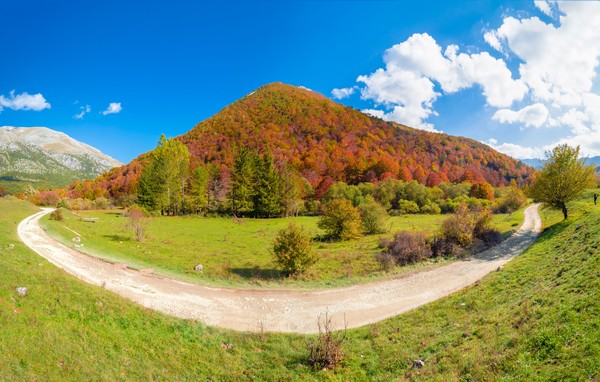
Forest management: the relaunch of mechanisation
Innovating the machinery of forestry operators is essential for active forest management. The Abruzzo-based GESTA project, financed by MASAF, distinguishes itself for combining new technologies with some traditional local practices
Government measures to support agricultural machinery - in particular the recent Decrees for the NRRP and for Innovation - do not fail to mention forestry activities and this represents an important element for the future of a sector that appears increasingly strategic. The fact that technological innovation can also affect forestry companies generates an opportunity of great strategic value for the modern re-launch of a sector that for decades has been experiencing a regressive trend. This has been detrimental to the proper protection of Italy's vast forestry heritage, and of the social fabric of many communities that have stewarded mountain areas until now.
Strengthening and innovating the forestry operators' machinery is a decisive step in the path to be taken, in full compliance with the National Forestry Plan, to activate active and sustainable forms of management of our forests. With this in mind, in addition to financing the modernisation of operating machinery, it is very important to show how to make the choice and how to use them in relation to the context in which they will be used. To this end, as part of the GESTA (Sustainable Land Management in Abruzzo) project, an experimental forestry site will be set up in October (16 - 22) to demonstrate the possibility of integrating modern technologies with traditional forestry techniques such as beasts of burden. In addition to the technological aspects, the project has a great strategic value and it is no coincidence that it was financed by MASAF through the "Call for the selection of project proposals for the establishment of associative or consortium forms of management of silvo-pastoral areas" under the FSC 2014-2020 POA sub-plan 3 "Multi-functionality of the forest and sustainable use of renewable resources in rural areas". The logic of the proposed work system is based on the assumption that today mechanisation of forest operations is the only way to ensure their sustainability. The old systems based on manual labour are no longer competitive in economic terms, nor can they be considered acceptable in social terms, due to excessive fatigue and the risk of accidents. However, the use of increasingly agile and powerful machines amplifies the environmental risk, and makes professional and controlled use imperative.
Abruzzo, where the worksite will be set up, is one of the few regions in Italy where working animals are still used. Regardless of any economic or environmental considerations, this working method has a strong historical and cultural value, which should be preserved with all available means. In order to encourage the use of forestry with animals, however, it must be made easy and competitive, otherwise its tendency to decline until it disappears becomes inexorable. To this end, the CNR, in collaboration with the ITABIA and GESTA Associations, will implement in the woods of Fonte Cerreto (Assergi - AQ) in the Gran Sasso e dei Monti della Laga National Park a new working method based on animal/machine integration, which aims to make work with animals more efficient and work with machines more eco-friendly. This combination, if well planned, could be introduced in a greater number of worksites by revitalising the current limited and decreasing availability of teams equipped with animals. At the same time, this new way of working could allow a strong mitigation of the environmental impacts related to the introduction of mechanisation.








